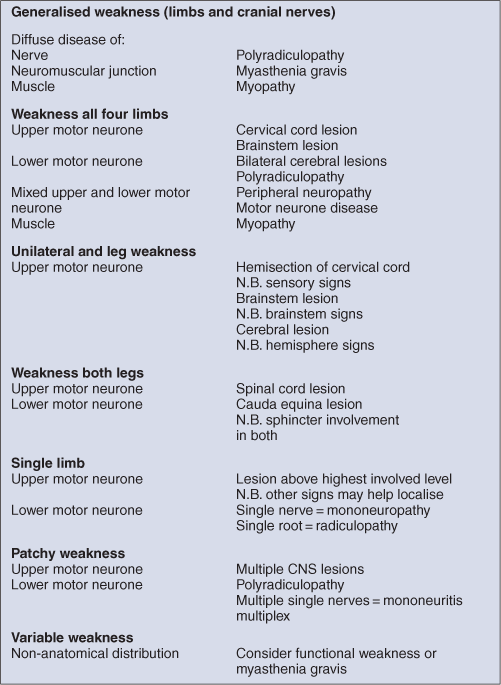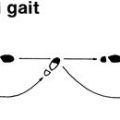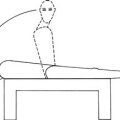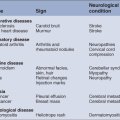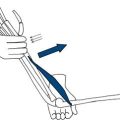Motor System
General
There are five patterns of muscular weakness:
2. Lower motor neurone (LMN): wasting, fasciculation, decreased tone and reduced or absent reflexes.
3. Muscle disease: wasting, decreased tone, impaired or absent reflexes.
4. Neuromuscular junction: fatigable weakness, normal or decreased tone, normal reflexes.
5. Functional weakness: normal tone, normal reflexes without wasting with erratic power.
The level of the nervous system affected can be determined by the distribution and pattern of the weakness and by associated findings (Table 15.1).
Examples of brainstem signs (all contralateral to the upper motor neurone weakness): third, fourth and sixth palsies, seventh lower motor neurone loss, nystagmus and dysarthria.
Hemisphere signs: aphasia, visual field defects, inattention or neglect, higher function deficits.
Mixed UMN and LMN lesions: motor neurone disease (with normal sensation), or combined cervical myelopathy and radiculopathy and lumbar radiculopathy (with sensory abnormalities).
Functional weakness should be considered when:
• the weakness is not in a distribution that can be understood on an anatomical basis
WHAT TO DO
Look at the position of the patient overall.
Look for wasting.
Look for fasciculation.
Testing muscles of respiration and trunk muscles can be very important in specific situations. These are described in Chapter 25.
General comments
Always:
• Describe what to do in simple terms.
• Demonstrate the movements you require.
• Test simple movements across single joints.
• Fix or hold the joint to isolate the movement you want to test.
• Compare the strength of the right side with the left side.
• Do not be afraid to repeat power tests so as to be certain of your findings.

